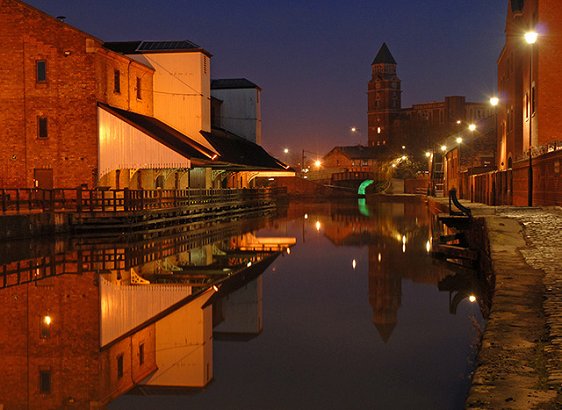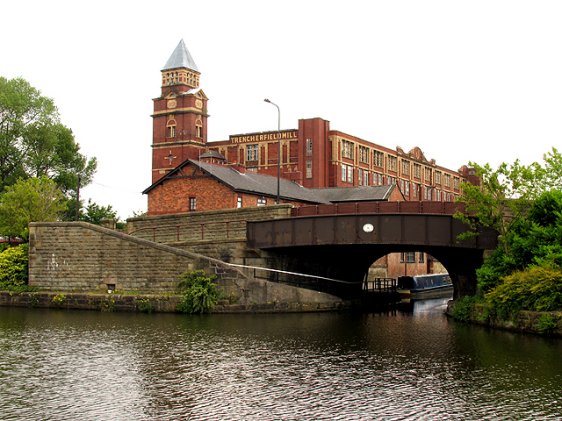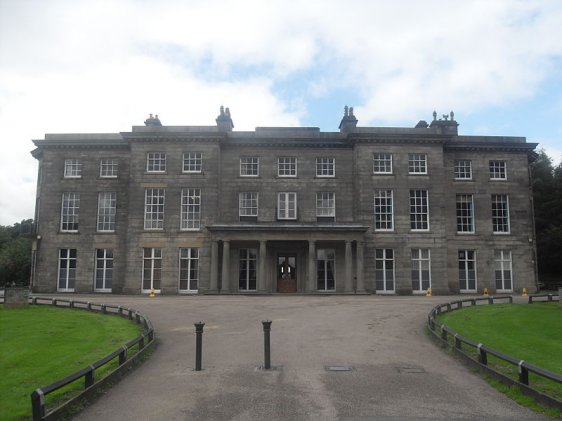 Wigan Pier and the Leeds & Liverpool Canal, Wigan: Source: https://commons.wikimedia.org/wiki/File:Wigan_Pier_and_the_Leeds_%26_Liverpool_Canal.jpg
Wigan Pier and the Leeds & Liverpool Canal, Wigan: Source: https://commons.wikimedia.org/wiki/File:Wigan_Pier_and_the_Leeds_%26_Liverpool_Canal.jpgAuthor: Dave Green

Wigan is a town on the western part of Greater Manchester, England. It is 26 km (16 miles) to the northwest of downtown Manchester. Wigan is the main town within the Metropolitan Borough of Wigan. It has a population of 81,000 people (2012 estimate), within a metropolitan area with 306,000 inhabitants.
Until the creation of Greater Manchester in 1974, Wigan was part of Lancashire. The area has been inhabited by the Brigantes, an ancient Celtic tribe since classical antiquity. The Brigantes were later replaced by Romans. Wigan is where the Romans established the settlement of Coccium.
Wigan was incorporated as a borough in 1246, and received a Royal charter from King Henry III in 1246, making it only one of four boroughs in Lancashire with Royal charters, the others being Lancaster, Liverpool and Preston.
 Trencherfield Mill, Wigan: Source: https://commons.wikimedia.org/wiki/File:Trencherfield_Mill,_Wigan_-_geograph.org.uk_-_17930.jpg
Trencherfield Mill, Wigan: Source: https://commons.wikimedia.org/wiki/File:Trencherfield_Mill,_Wigan_-_geograph.org.uk_-_17930.jpgAuthor: Pam Brophy

Wigan was just a small town until the Industrial Revolution of the 19th century brought about dramatic growth. Being a center for coal mining helps it develop as a mill town. Coal mining has been carried out in Wigan since the 15th century. At its height in the 19th century, there were as many as a thousand pit shafts in and around the town. However, by the 20th century, coal mining was in decline, as was the milling industry.
Today the economy of Wigan centers around retail trade. Other major industries include manufacturing, health and social work, and construction. The town has many heritage buildings, a total of 216 of which are listed and 20 of them given the Grade II* status.
Visiting Wigan
From downtown Manchester, take the A572 road heading west until junction with the A577 road. Follow the A577 road until it reaches Wigan. Haigh Hall, Wigan: Source: https://commons.wikimedia.org/wiki/File:Haigh_Hall_2000746.jpg
Haigh Hall, Wigan: Source: https://commons.wikimedia.org/wiki/File:Haigh_Hall_2000746.jpgAuthor: Anthony Parkes

Places of Interest in Wigan
- Haigh Hall: Country house and home to Sir William Bradshaw, it is surrounded by a 250-acre country park.
- Mab's Cross: Stone cross dating from the 13th century.
- Museum of Wigan Life: Public museum and local history resource center dating back to the founding of Wigan Public Library in 1878. This was where George Orwell did the research for his book The Road to Wigan Pier.
- Trencherfield Mill: Historic cotton spinning mill now redeveloped as part of Wigan Pier.
- Wigan Pier: Waterfront area redeveloped as a performing arts center and retail precinct.
 Latest updates on Penang Travel Tips
Latest updates on Penang Travel Tips

Copyright © 2003-2025 Timothy Tye. All Rights Reserved.

 Go Back
Go Back